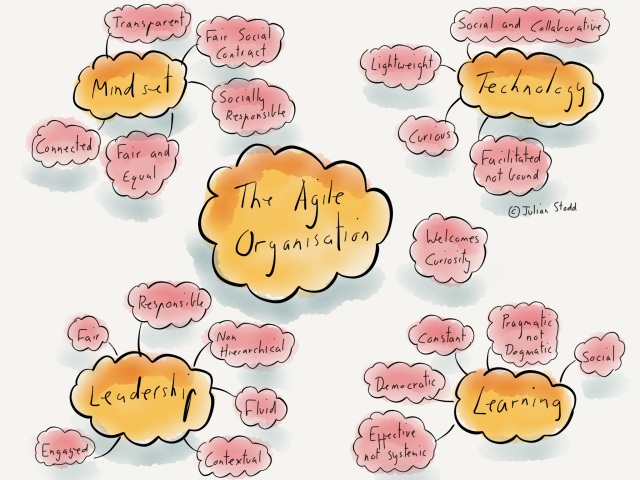There’s a dilemma: when an organisation is small, it tends to be Dynamic by design. As it grows, it engineers in it’s own lethargy: systems, processes, mindset, embedded power and authority, culture, all contribute to make it safe, but inhibit it’s ability to adapt.
Infrastructure is a case in point, and as i’ve spent the day at the Learning Technologies Conference in London, it’s very much on my mind. Here’s the challenge: many of the technologies on show are great. They are heavily engineered to solve a problem. The challenge is, it may be yesterdays problem.
In the Social Age, the most Dynamic organisations utilise a diverse ecosystem of technology, not one system that thinks it can rule them all. Why? Because of that lethargy that’s built in. One system may solve one set of problems, but it won’t solve all problems and, indeed, as it reaches out and tries to, it just becomes more complex, more frustrating, more lethargic and unable to fundamentally reengineer itself to the task at hand. Within a diverse ecosystem, you just swap out the component that you’ve outgrown, or add in the node that you are missing.
Part of the problems is in the suppliers who try to overreach their expertise to capture too much of a market, the other part is with procurement that makes it hard to let go.
Organisations tend to procure for the long term, in an ecosystem that favours agility, prototyping, experimentation and iteration. Long term procurement leads to the purchase of dinosaur systems that are not flexible, not adaptive, and simply try to bolt on the solution to your latest challenge.
Fundamentally what’s needed is a mindset of adaptation: an understanding of how people learn, of what they need to perform, and a diverse ecosystem technologies that learns to service that.
Not control it.
In the old world, technology was a mechanism of control over the individual: in the new world, it should be facilitating. And in the new world, we are used to App based solutions that are both lightweight and disposable.
The notion of disposable is important: on my iPad i currently have 140 Apps, of which i have used 12 in the last month. What are the odds that the organisation backed one of the 128 that just didn’t work for me right now?
The boldest organisations that i work with are ready to break this cycle: keep control of the mindset, own the space, and cycle in the technologies that suit the organisation in the moment. And cycle them out again when they don’t, even if that’s in six months time.
Facilitating technology that moves away from a mindset of control.
Adaptive technology that can be trusted.
Changeable ecosystems of diverse technologies that fit our current needs.
Innovative technologies that are lightweight and solve one problem well.
Connective technologies that support social and adaptive learning.
Disposable technologies that are not deeply embedded.
Truly Dynamic organisations adopt a holistic pattern of adaptation: always remaining relevant in the moment. Not anchoring themselves to the past.





Wonder if putting a Social Interface across a number of smaller systems is what ‘light and agile’ looks like. Is that possible to extend the ‘life’ of the highly engineered learning technologies?
Hey Julian, have you looked at any of Nassim Taleb’s material on anti-fragility? I’m still not completely sure how to apply it, but I think it’s an interesting part of the conversation about adaptive and agile organizations.
You know what, i have come across it, but not given it enough attention: thanks for the prompt, i will explore further! Hope you’re well, best wishes, Julian
Pingback: Afraid of the Dark? The Perilous Grey Space | Julian Stodd's Learning Blog